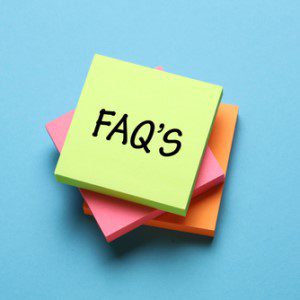
Health Reimbursement Arrangements (HRAs) help employees pay for out-of-pocket medical expenses for themselves and their covered dependents. The sponsoring employer chooses the amount available each year and the eligible expenses. Below are answers to common questions about these tax-advantaged accounts.
Frequently Asked Questions
What is a Health Reimbursement Arrangement?
An HRA is an employer-owned and -funded benefit account. Plan participants and their covered dependents use account funds to pay for eligible healthcare expenses.
Is my HRA my health insurance?
No. HRAs are not health insurance but usually pair with an employer’s health insurance plan. In addition, you cannot use funds from a standard HRA to pay for health insurance premiums.
Who contributes to my account?
By law, HRA funds may only come from the employer. Therefore, employees may not contribute any funds to the HRA account. In addition, HRA funds do not count toward an employee’s gross income.
Who receives the tax deduction benefit from an HRA?
The employer funds the HRA, so the company receives the tax benefits. However, since HRA funds do not count toward an employee’s income, employees are not taxed on the benefit amount.
Is there an annual contribution limit?
Unlike FSAs and HSAs, there are no IRS-imposed annual limits on how much an employer can contribute to a standard HRA. That enables the employer to determine the amount available each year.
When do HRA funds deposit into my account?
HRA funds may deposit on an annual, semi-annual, quarterly, or monthly frequency or even by the claim. This decision comes from the employer consulting with their benefits advisor or plan administrator.
What is an eligible expense?
Plan parameters will set HRA-eligible expenses. Still, they must comply with IRS regulations regarding eligible healthcare expenses. Expenses commonly reimbursed by an HRA include copays, deductibles, and prescriptions.
Which expenses are not eligible?
IRS Publication 502 describes the expenses not eligible for reimbursement from tax-advantaged benefit accounts. Some examples include:
- Babysitting, childcare, and nursing services for a normal, healthy baby
- Contributions to other tax-advantaged accounts (e.g., FSA, HSA)
- Controlled substances that are illegal under federal law
- Cosmetic surgeries and procedures not related to illness/disease or impairment of normal bodily function (i.e., teeth whitening, hair removal or transplants, elective breast enlargement)
- Dancing lessons
- Diaper services
- Future medical care
- Health club dues
- Health coverage tax credit
- Household help
- Illegal operations and treatments
- Insurance premiums
- Maternity clothes
- Medicines and drugs from another country
- Nonprescription drugs and medications
- (Over-the-counter)The Summary Plan Description (SPD) is a document the sponsoring employer issues to participants that outlines all plan terms and conditions. The SPD provides details on the following:
- Nutritional supplements
- Personal use items (i.e., toothbrush)
- Premium tax credits
- Swimming lessons
- Veterinary fees
- Weight-loss programs
What is a Summary Plan Description?
The Summary Plan Description (SPD) is a document the sponsoring employer issues to participants that outlines all plan terms and conditions. The SPD provides details on the following:
- Plan year dates
- Description of benefits/eligible expenses
- Funding amount
- Participant eligibility
- Claims procedures
- COBRA, HIPAA, and other federal mandates
- Plan and participant termination
- Circumstances that would cause a loss of benefits
If I have an HRA, can I also get reimbursements from an FSA or HSA?
You can have an HRA simultaneously with an FSA or HSA, but you cannot claim the same expense to get reimbursed from multiple accounts. In other words, you can only be reimbursed once for the same expense; there is no “double dipping.”
Some situations may allow reimbursement from multiple accounts, though not for the same total expense. For example, say you have only $200 left in your HRA account but incur a $500 eligible expense. After receiving the $200 reimbursement from your HRA, you can receive a reimbursement for the remaining $300 from your FSA. This is permitted because that portion of the total amount had yet to be reimbursed. If you have an HRA and FSA (or HSA), your SPD will outline which account pays first.
Can I get my funds on a debit card?
Some HRAs can be linked to a benefits debit card. Again, the SPD will outline whether or not your plan offers a card.
Do HRA funds roll over?
Some plans may allow HRA rollover at the end of the plan year. Refer to the SPD to learn if your plan is one of them.
What happens if I leave the company?
Since HRAs are employer-owned, employees cannot keep any funds remaining in their account when they leave employment (whether termination is voluntary or involuntary). However, some employers offer retirement HRAs or other provisions allowing the use of the funds for a certain period after termination. This will be outlined in the plan’s SPD.
Beneliance has provided Arkansas employers with comprehensive third-party employee benefits administration and compliance services since 1996. Please enter your email (above right) to receive notifications about new blog articles as they are published.



